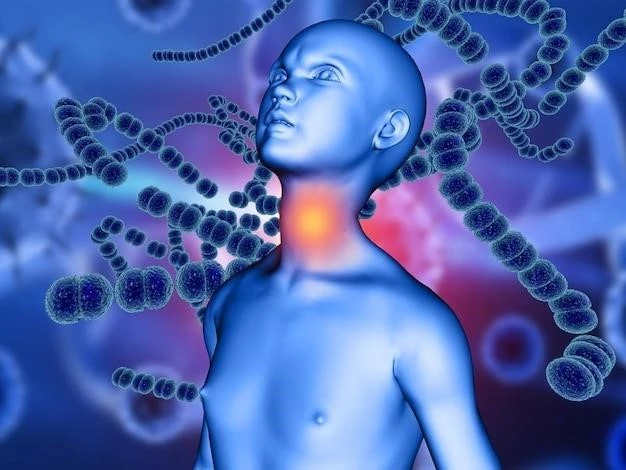Article Plan⁚ Disease ⸺ Spondyloenchondrodysplasia
Overview of Spondyloenchondrodysplasia
Spondyloenchondrodysplasia is a rare genetic disorder that affects bone growth and immune system function. It is characterized by skeletal anomalies such as short stature, platyspondyly, and enchondromas in the long bones or pelvis. The condition has a variable clinical spectrum, with some individuals experiencing neurological involvement like spasticity and developmental delay.
Individuals with Spondyloenchondrodysplasia may present with bone abnormalities, including irregular spondylar and metaphyseal lesions. The disease is caused by biallelic mutations in the ACP5 gene, leading to immune dysregulation and, in some cases, neurological abnormalities. Diagnosis typically involves clinical evaluation, genetic testing, and imaging studies to assess skeletal and immune system involvement.
Although Spondyloenchondrodysplasia is rare, ongoing research and clinical trials aim to better understand the condition and develop treatment strategies. Individuals with this disorder may benefit from comprehensive medical care, including physical therapy, orthopedic interventions, and other supportive measures to manage the skeletal and immune-related symptoms.
Genetic Basis and Inheritance Pattern

Spondyloenchondrodysplasia, caused by mutations in the ACP5 gene, follows an autosomal recessive inheritance pattern. The gene mutations result in skeletal anomalies, immune dysregulation, and potential neurological issues in affected individuals. Understanding the genetic basis is crucial for diagnosis and genetic counseling to assess the risk of passing this condition on to future generations. Genetic testing and evaluation by healthcare professionals specializing in genetics are essential in managing the hereditary aspects and implications of Spondyloenchondrodysplasia.
Clinical Manifestations and Symptoms
Spondyloenchondrodysplasia manifests with a variety of clinical symptoms affecting the skeletal system, immune response, and sometimes the nervous system. Common symptoms include short stature, platyspondyly, and irregular metaphyseal lesions. Individuals may also experience immune dysregulation, such as lupus-like features, and neurological issues like spasticity, seizures, and developmental delays. The presentation of symptoms can vary among affected individuals, making early diagnosis and comprehensive medical evaluation crucial for proper management and treatment.
Radiological Features of Spondyloenchondrodysplasia
Spondyloenchondrodysplasia presents unique radiological features, including irregular spondylar and metaphyseal lesions that consist of chondroid tissue islands. These radiolucent abnormalities are key in diagnosing the disorder. Enchondromas, specifically in long bones or pelvis, can also be visualized through imaging studies. Understanding the distinct radiological characteristics is essential for healthcare professionals to accurately identify and monitor the skeletal manifestations of Spondyloenchondrodysplasia.

Immune Dysregulation in Spondyloenchondrodysplasia
Spondyloenchondrodysplasia is associated with immune dysregulation, impacting the body’s ability to fend off infections and regulate inflammatory responses. Patients may exhibit lupus-like features and other autoimmune manifestations due to the genetic mutations affecting immune system function. Understanding the interplay between skeletal abnormalities and immune dysregulation is vital for providing comprehensive care to individuals with Spondyloenchondrodysplasia.
Neurological Involvement in Spondyloenchondrodysplasia
Neurological involvement in Spondyloenchondrodysplasia can present with symptoms like spasticity, developmental delay, seizures, and other neurologic manifestations. These issues can significantly impact the quality of life for individuals with this condition. It’s important for healthcare professionals to closely monitor and address any neurological symptoms to provide appropriate care and support tailored to the individual’s needs.
Diagnosis of Spondyloenchondrodysplasia
Diagnosing Spondyloenchondrodysplasia involves a multifaceted approach that includes clinical evaluation, imaging studies, and genetic testing. Healthcare providers specializing in rare genetic disorders play a crucial role in identifying the characteristic skeletal anomalies, immune dysregulation signs, and possible neurological involvement. Genetic testing to detect mutations in the ACP5 gene is essential for confirming the diagnosis and understanding the hereditary implications of the condition. Early and accurate diagnosis facilitates appropriate management strategies and supportive care tailored to the individual’s needs.
Treatment Options for Spondyloenchondrodysplasia
Individuals with Spondyloenchondrodysplasia require a multidisciplinary approach to management due to the complex nature of the disorder. Treatment focuses on addressing the skeletal anomalies, immune dysregulation, and any neurological involvement present. Modalities such as physical therapy, orthopedic interventions, and medications to manage immune-related symptoms may be recommended based on the individual’s specific needs. Regular monitoring by healthcare professionals specialized in rare genetic disorders is crucial to tailor the treatment plan and provide ongoing support for individuals with Spondyloenchondrodysplasia.
Research and Clinical Trials on Spondyloenchondrodysplasia
Spondyloenchondrodysplasia research and clinical trials focus on understanding the genetic basis, skeletal anomalies, immune dysregulation, and neurologic involvement of the condition. Ongoing studies aim to enhance diagnostic methods, explore treatment options, and improve management strategies for individuals affected by Spondyloenchondrodysplasia. Participation in clinical trials can provide access to cutting-edge therapies and contribute to advancing medical knowledge in this rare genetic disorder.
Support and Resources for Individuals with Spondyloenchondrodysplasia
For individuals with Spondyloenchondrodysplasia, accessing support and resources is vital in navigating the complexities of this rare genetic disorder. Connecting with patient advocacy groups, rare disease organizations, and specialized healthcare providers can provide valuable guidance, emotional support, and access to up-to-date information on the condition. Additionally, participating in support groups and seeking genetic counseling can help individuals and their families better understand and manage Spondyloenchondrodysplasia.
